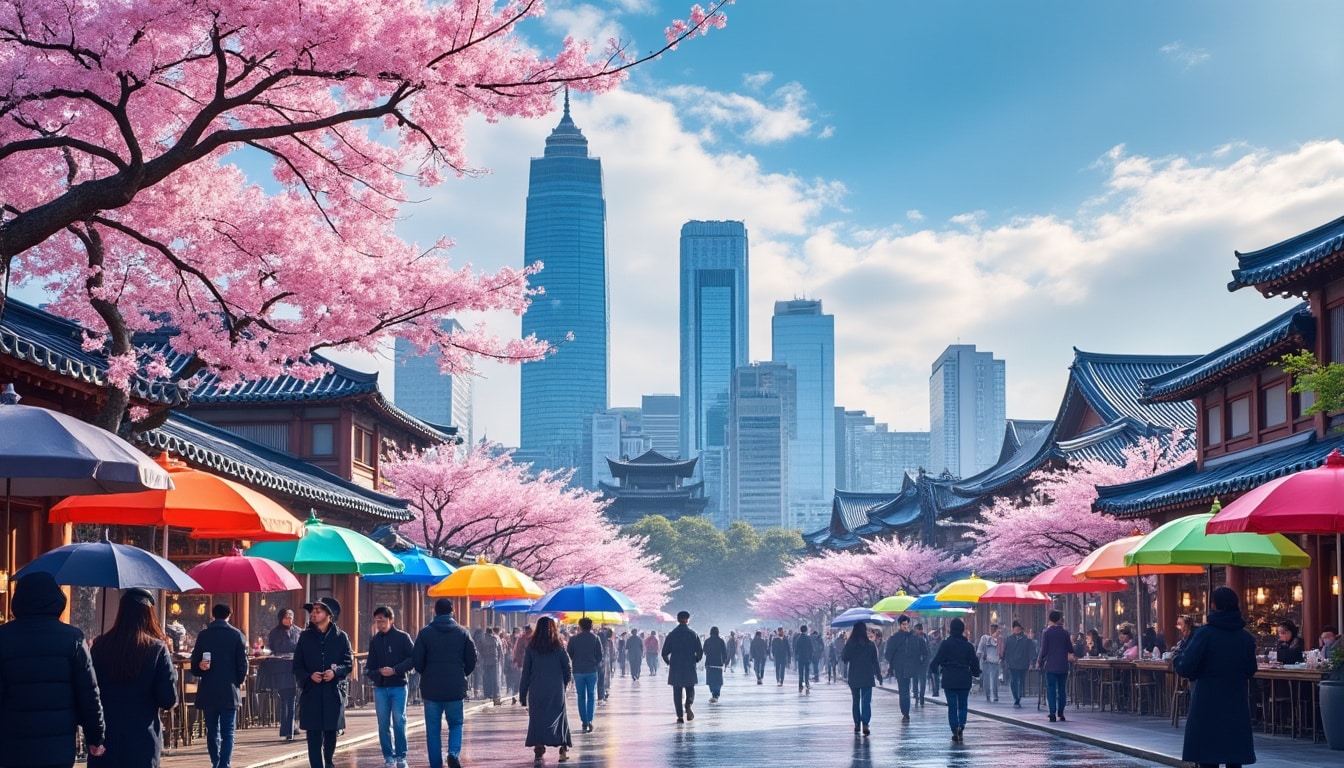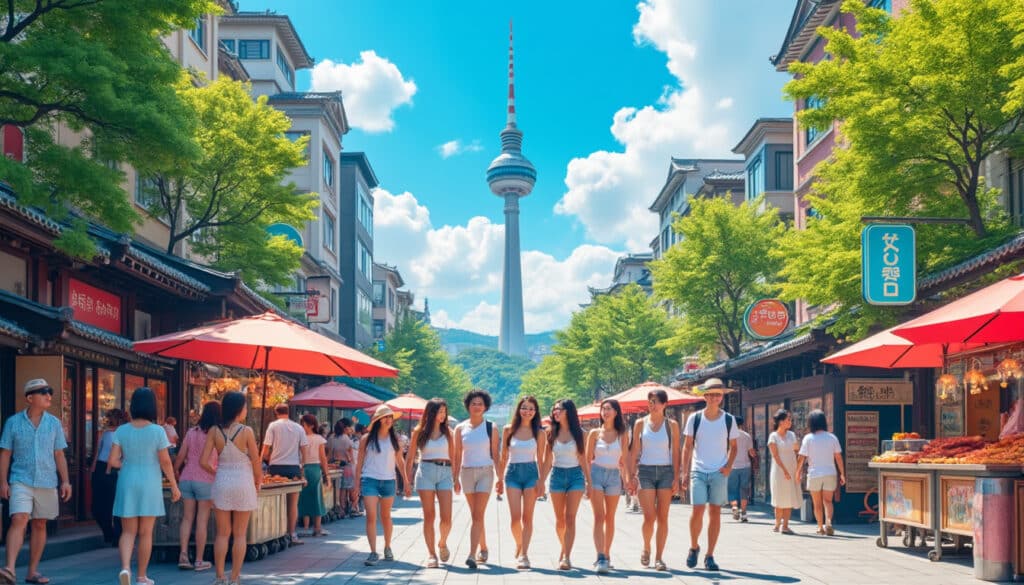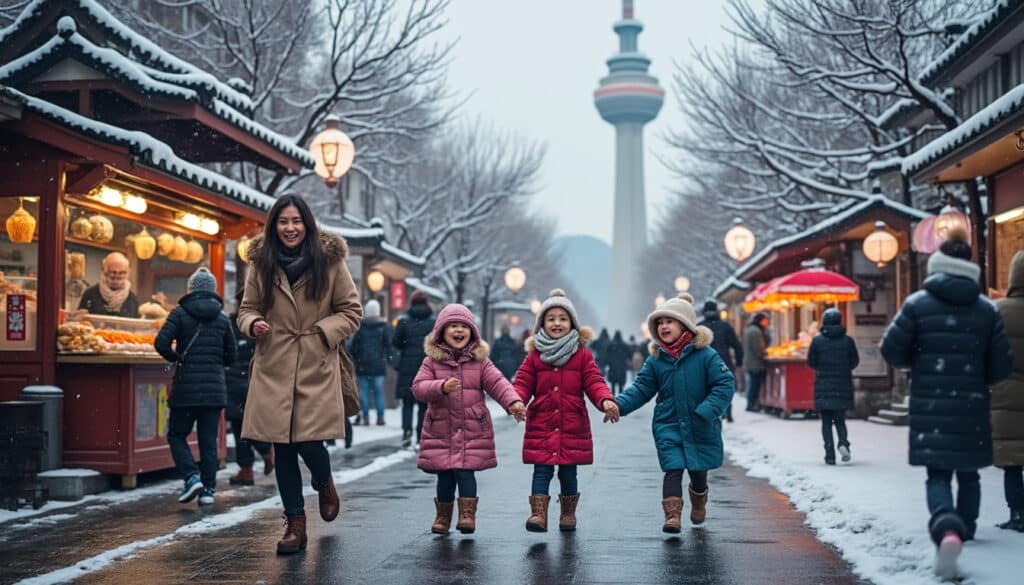Seoul, a bustling metropolis with a perfect blend of ancient traditions and modern innovations, often leaves its visitors and residents curious about its weather patterns. While the city is famous for its historic palaces, cutting-edge technology, and mouth-watering cuisine, understanding its weather is crucial for anyone planning to explore this vibrant capital. Let’s delve into the intricate details of Seoul’s weather and equip yourself with the knowledge needed to embrace every season.
Seoul’s Seasonal Weather Patterns
Seoul experiences a diverse range of weather conditions throughout the year, thanks to its humid continental climate. The city is characterized by four distinct seasons: spring, summer, autumn, and winter, each offering its own unique charm and challenges.
Spring in Seoul, spanning from March to May, is a delightful time when the city awakens from its winter slumber. Temperatures gradually rise from a chilly 7°C in March to a comfortable 20°C in May. This season is often celebrated for the breathtaking cherry blossoms that paint the cityscape in delicate shades of pink. As the blossoms bloom, many people flock to locations like Yeouido Park and Namsan Mountain to witness this picturesque transformation. However, sporadic showers may occur, so it’s advisable to carry an umbrella.
When summer arrives in June, the temperatures soar, reaching highs of 30°C by August. Summers in Seoul are hot and humid, with the city receiving significant rainfall during the monsoon season, locally known as “jangma.” Expect intense showers, especially in July, when precipitation peaks. Exploring indoor attractions such as museums and shopping malls can be a wise choice during these times.
The autumn months of September to November are arguably the most beautiful. As the humidity decreases, the days become pleasantly warm with temperatures ranging from 15°C to 25°C. The landscape transforms once again, this time with vibrant foliage in reds, oranges, and yellows gracing locations like the picturesque Gyeongbokgung Palace. A light jacket or sweater would be ideal for the cooler evenings.
Winter in Seoul, from December to February, is marked by cold temperatures, often dipping below 0°C in January. Snowfall is quite common, turning the city into a winter wonderland. However, the cold is dry, which can be more comfortable than the wet cold experienced in other parts of the world. Layers of clothing, including thermal wear, are essential to stay warm.
- 🌸 Spring (March-May): Cherry blossoms, temperatures between 7°C – 20°C
- 🔥 Summer (June-August): Monsoon rains, temperatures up to 30°C
- 🍁 Autumn (September-November): Cool, dry, temperatures 15°C – 25°C
- ❄️ Winter (December-February): Snowy, temperatures below 0°C
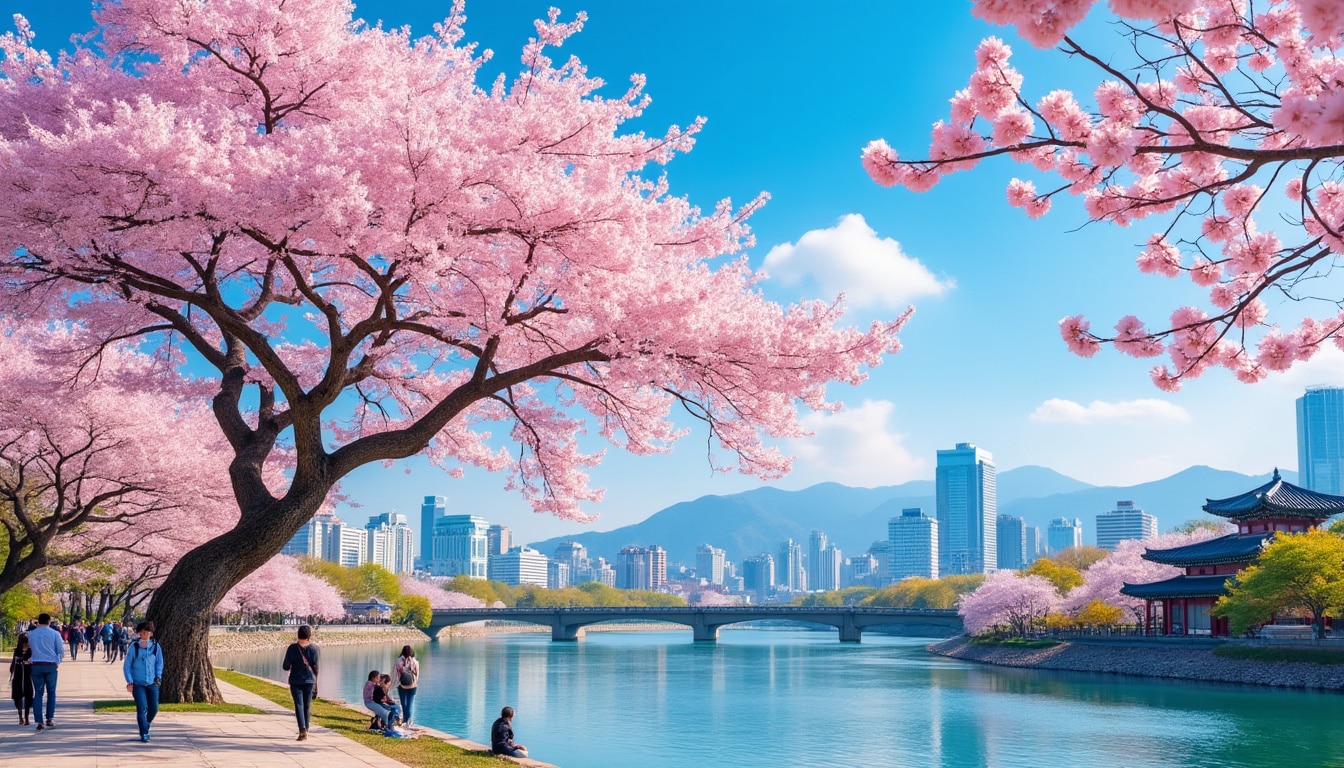
Seoul’s Seasonal Attractions
Seoul not only offers varied weather conditions but also seasonal attractions that enhance the visitor experience. In the spring, the vibrant cherry blossoms can be enjoyed while walking along the Han River. Summer is a time for exciting festivals like the Boryeong Mud Festival, where visitors can beat the heat with muddy fun combined with music and dance.
Autumn is ideal for hiking trips in the surrounding mountains such as Bukhan or Namhan, and winter brings the joy of ice skating outdoors at Seoul Plaza or tasting warm Korean street food at markets like Namdaemun or Gwangjang.
Understanding Seoul’s Temperature Fluctuations
Throughout the different seasons, Seoul’s temperatures exhibit dramatic fluctuations, often influenced by geographical factors, atmospheric pressure changes, and seasonal winds. This will affect how you experience different aspects of the city.
The city’s temperature is greatly impacted by the Siberian anticyclone, a massive cold core high-pressure system during winter, bringing cold waves from the north. Hence, Seoul experiences frigid but sunny afternoons with crisp blue skies. During summer, the situation reverses as Seoul contends with the wet monsoon air masses, primarily from the Pacific Ocean, resulting in sultry and overcast weather.
According to reports from the National Weather Service and The Weather Channel, temperature fluctuations in Seoul can sometimes be abrupt. For instance, it is not unheard of to have a day with soaring temperatures followed by a sudden drop, especially during the transitional seasons of spring and autumn.
Here’s a glimpse at Seoul’s temperature variations:
| Month | Average High (°C) | Average Low (°C) |
|---|---|---|
| January | 2°C | -6°C |
| April | 17°C | 7°C |
| July | 29°C | 22°C |
| October | 20°C | 9°C |
Bus stops and subways often have updated weather information displayed through screens, an innovative feature provided by local initiatives like WeatherBug, ensuring residents and tourists can plan their day accordingly even at the last minute.
The Impact of Seoul’s Weather on Daily Life
Seoul’s ever-changing weather can significantly influence daily activities. The local culture has adapted to these climate changes over the years. People often rely on AccuWeather and Weather Underground for accurate weather forecasts to align their travel plans or work schedules accordingly. From the sudden showers in summer that prompt the spontaneous selling of umbrellas in street corners to the winter wool clothing rush, weather distinctly impacts lifestyle.
Anticipating Seoul’s weather allows one to prepare and adapt, ensuring every moment in this city is experienced to its fullest, come rain or shine.
Dealing with Precipitation in Seoul
Rain and snowfall are integral parts of Seoul’s climate narrative, offering unique experiences throughout the year. While the rain generally marks the intensity of summer, winter is synonymous with snowflakes gently gracing the city’s rooftops.
Seoul’s peak rainfall period coincides with the monsoon season from June to August, with July often being the wettest month. During this time, rain can be heavy and accompanied by thunderstorm activity. According to BBC Weather, understanding when heavy downpours might occur is essential for travelers to avoid disruptions in plans and make use of indoor activities when necessary. Equipped with reliable data from resources like Seoul Ambiance, one can navigate the city with foresight and ease during these wet periods.
Winter precipitation primarily involves snowfall. On average, Seoul receives up to 27cm of snowfall annually. The snow, while beautiful, can sometimes lead to disruptions in public transportation or road closures, particularly during heavier snowfalls in January.
Let’s briefly consider Seoul’s precipitation levels:
| Month | Average Rainfall (mm) | Average Snowfall (cm) |
|---|---|---|
| January | 23mm | 8cm |
| July | 385mm | 0cm |
| October | 52mm | 0.1cm |
| December | 25mm | 9cm |
- 🌧️ Summer: Heavy rains, 385mm in July
- ❄️ Winter: Light to moderate snow, 27cm annually
Rainy days, while a challenge, present an opportunity to experience Seoul’s culture in a different light, often leading to introspective moments staying cozy indoors with a warm cup of tea.
The Adaptability of Seoul’s Infrastructure
Seoul’s infrastructure is designed with the city’s precipitation patterns in mind. Its robust drainage systems effectively manage rainwater, while its snow removal and road treatment services are quick to respond during winter storms. Public transportation, heavily utilized by residents, generally withstands weather challenges, albeit with occasional delays.
Such resilience in infrastructure is a testament to Seoul’s commitment to maintaining functional urban life regardless of weather conditions, ensuring minimal disruptions for those who call the city home.
Humidity and Air Quality in Seoul
Humidity and air quality are significant facets of Seoul’s weather that visitors and residents should be aware of. The summer months, particularly July and August, bring elevated humidity levels above 80%, contributing to a muggy climate. Conversely, winter infuses this dynamic city with much drier air.
Humidity influences not only the comfort level but also affects air quality. Seoul is known for facing humidity challenges, especially with the influx of fine dust, largely due to industrial emissions and transboundary pollutants from neighboring regions. Close monitoring by platforms like Weather.com and Sky News Weather ensures residents receive timely notifications about air quality, prompting them to take necessary precautions.
Indoor air purifiers have become commonplace in Seoul homes, and wearing masks during high pollution days is a regular practice. Local weather stations and apps provide vital air quality indices, helping individuals plan outdoor activities with confidence.
Understanding Seoul’s humidity levels can be insightful:
| Month | Average Humidity (%) |
|---|---|
| March | 60% |
| July | 82% |
| October | 67% |
| December | 76% |
It’s also notable how Seoul implements measures through governmental and local bodies to tackle air quality issues, showcasing its proactive stance in improving urban living conditions.
Seoul’s Efforts to Combat Air Pollution
Various initiatives are underway in Seoul to enhance air quality. The expansion of public transportation networks, increasing green spaces, and regulating industrial emissions are part of the city’s comprehensive strategy to fight pollution. Collaborations with international organizations and neighboring countries are also crucial to these ongoing initiatives.
Seoul continues to monitor and adapt to climatic challenges, ensuring that its iconic skyline remains clear and the air remains breathable for future generations.
Seoul’s Local Weather Resources and Forecasting
For those living in or traveling to Seoul, staying informed about the latest weather conditions is vital. A variety of local and international resources play a significant role in providing accurate and timely forecasts.
MeteoGroup and the National Weather Service offer detailed forecasts and alerts, while apps like WeatherBug keep individuals updated on the go. These platforms are particularly invaluable during severe weather events such as typhoons or cold snaps, ensuring that everyone prepares adequately and remains safe.
Additionally, the use of local sources like Seoul Ambiance can provide nuanced insights tailored to Seoul’s microclimates and provide a deeper understanding of how weather can affect daily life in this dynamic city.
- 📱 Use apps: Download WeatherBug for real-time updates
- 🌐 Check forecasts: Reliable forecasting on The Weather Channel
- 🌆 Local insights: Refer to websites like Seoul Ambiance
By leveraging these resources, whether planning a K-pop concert in the park or a serene outing to Seoul’s traditional tea houses, the city offers a user-friendly approach to navigating its diverse climate.
Integrating Modern Technology for Improved Forecasting
Seoul’s rapidly evolving technological landscape serves as a platform for innovative weather solutions. Integration with AI technology and big data analytics has provided significant improvements in predictive capabilities. From satellite data to ground sensors, the cohesion of these advanced technologies ensures that Seoul remains at the forefront of accurate and detailed weather forecasting.
If you’re planning a visit anytime soon, these tools are essential in maximizing your Seoul experience, ensuring that unforeseen weather conditions don’t dampen the excitement of discovering this amazing city.
Frequently Asked Questions
- How cold does it get during winters in Seoul?
Winters in Seoul can be quite chilly, with temperatures often dropping below 0°C, especially in January.
- What should I pack for a summer trip to Seoul?
Lightweight clothing is recommended along with a few rainproof items due to summer rains. A sunhat and sunscreen are also advisable.
- Are there any popular indoor options during rainy days in Seoul?
Yes, Seoul offers numerous indoor attractions such as the War Memorial of Korea, COEX Aquarium, and numerous shopping malls ideal for rainy days.

Seoul, the bustling heart of South Korea, boasts a climate as vibrant and varied as its cultural landscape. Visitors and residents alike are treated to four distinct seasons, each bringing its own flavor to the city. From the icy chills…
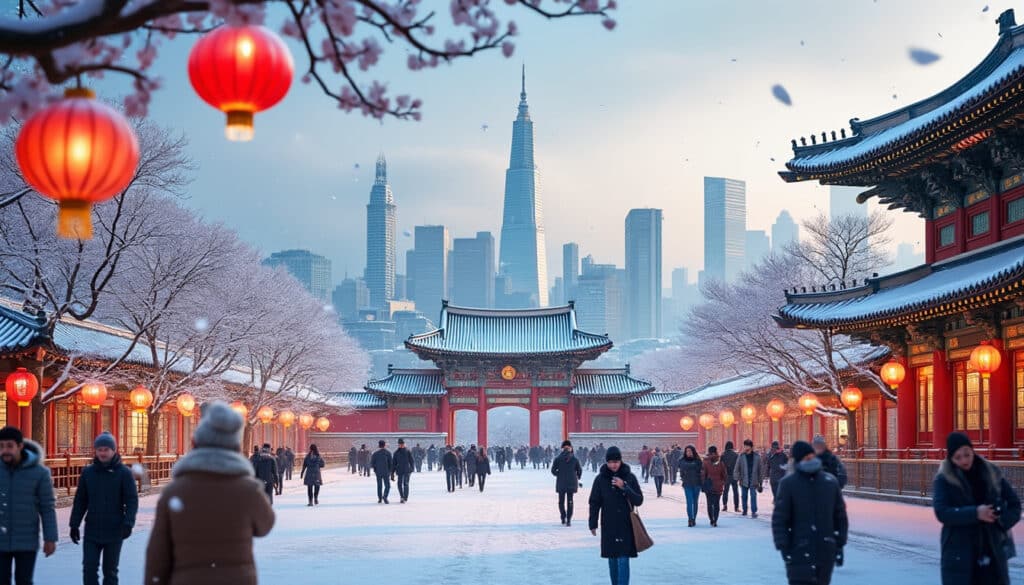
When imagining Seoul in winter, visions of snow-dusted palaces, serene parks, and bustling streets adorned in festive decorations might come to mind. But does it truly snow in Seoul? While South Korea’s capital city does experience winter weather, it doesn’t…

Flooding and natural risks in Seoul
Seoul, the bustling heart of Korea, is not without its challenges. As the city juggles rapid urbanization and meteoric technological advances, it also faces the formidable threats of flooding and other natural risks. Dubbed as one of the “Mega Cities”,…
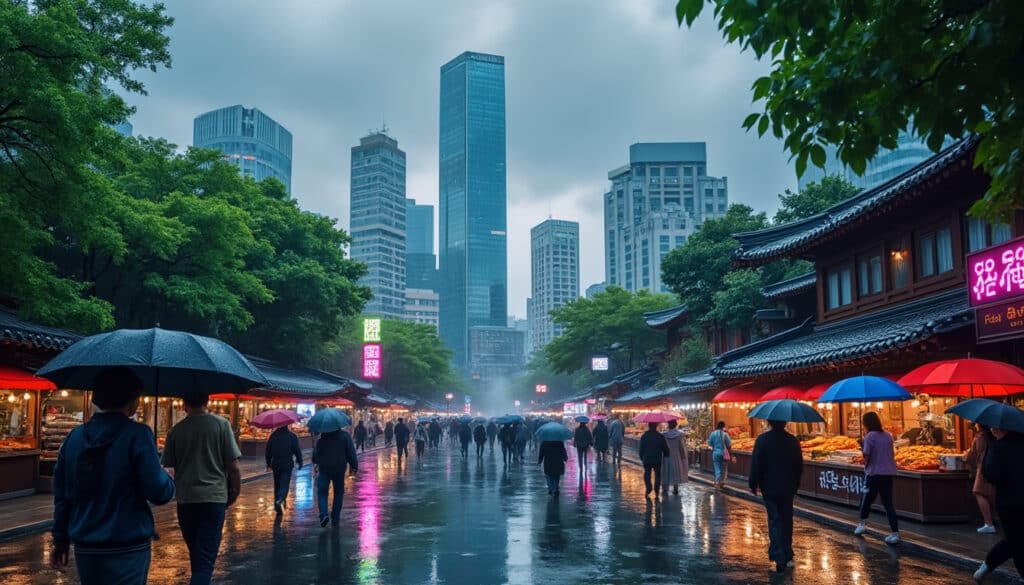
When one thinks of Seoul, the vibrant capital of South Korea, they might envision bustling streets, cutting-edge technology, and a rich blend of modern and traditional culture. However, nestled within these urban delights is a lesser-discussed yet crucial aspect: the…

Is Seoul warm throughout the year?
Seoul, the dynamic capital of South Korea, is known for its rich culture and vibrant cityscape. Yet, it also presents a diverse climate that varies significantly across the year. Understanding Seoul’s weather patterns is essential for prospective travelers, businesses like…
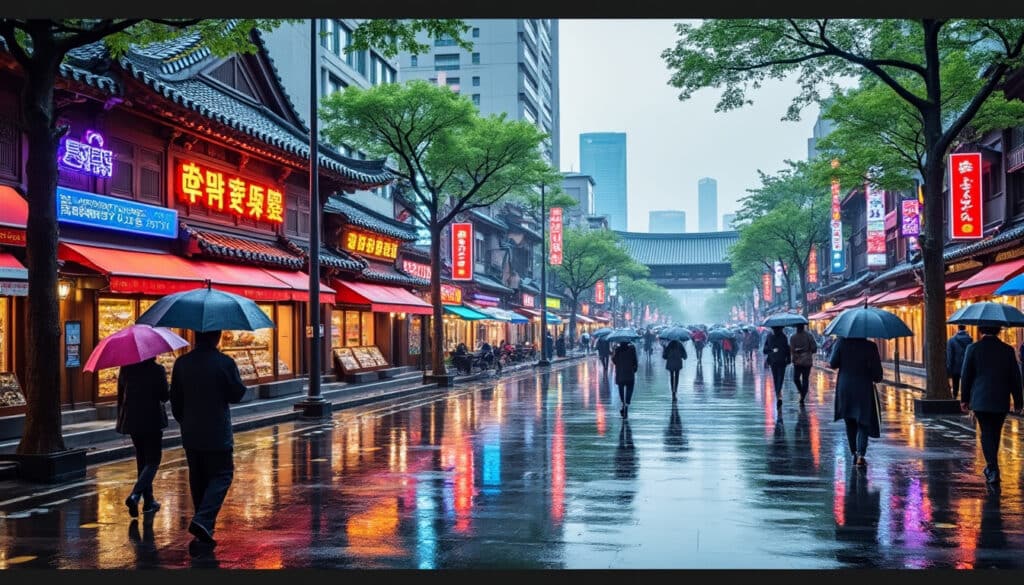
Rain and precipitation in Seoul
Seoul, the bustling heart of South Korea, is a city that experiences a wide array of weather patterns throughout the year. Its unique climate is characterized by hot, humid summers and cold, dry winters, influenced by its geographical location and…
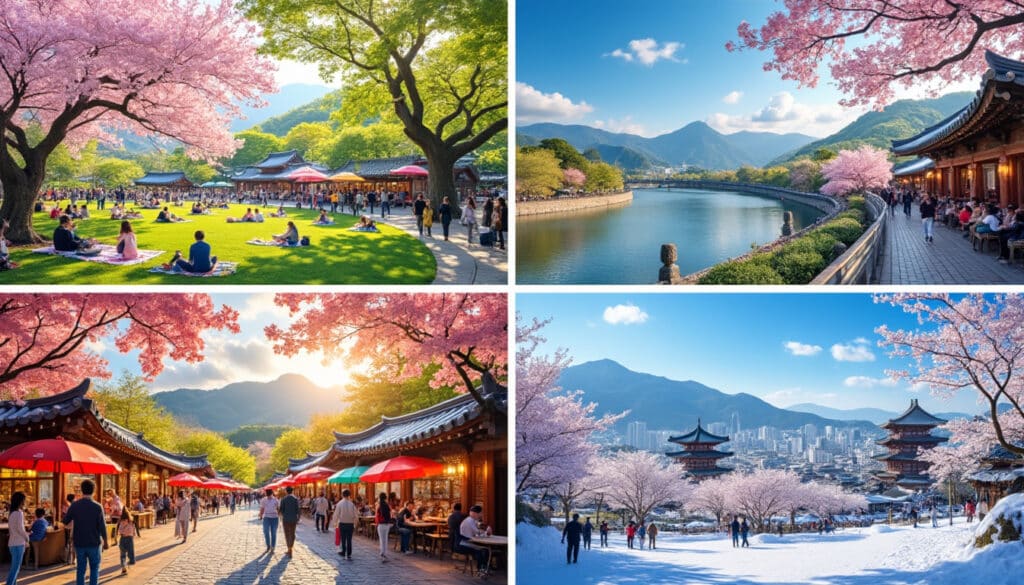
Seoul, the vibrant heart of South Korea, is a city that never sleeps. With its bustling streets and a culture that blends the traditional with the ultra-modern, it offers an experience for every kind of traveler. One of Seoul’s most…

Seoul, the vibrant capital of South Korea, presents a captivating blend of ancient traditions and bustling modernity. In this city where time seems to stand still and rush forward simultaneously, experiencing the beginning of a new day at sunrise is…
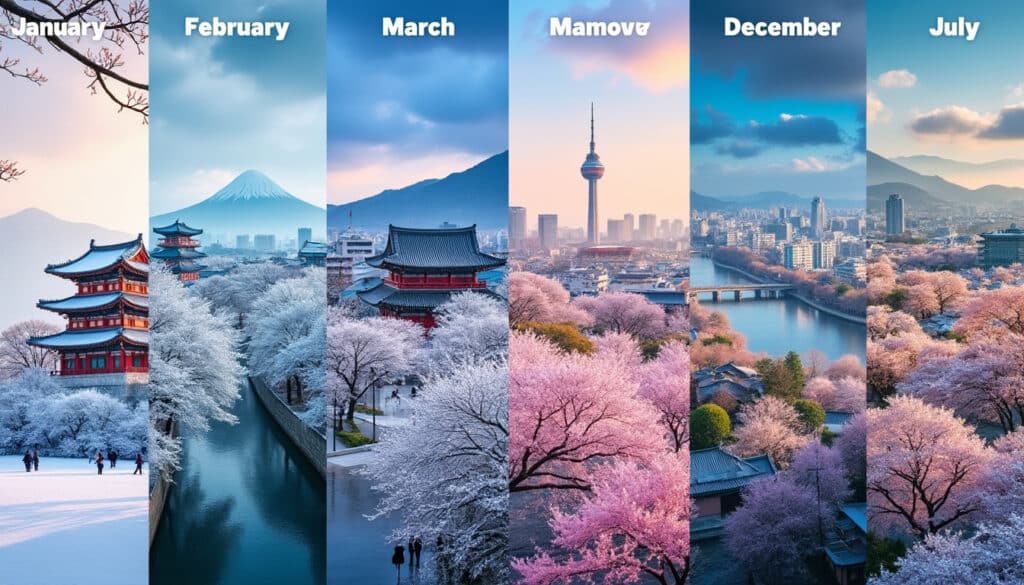
Seoul, the vibrant capital of South Korea, is a city known for its dynamic atmosphere, rich cultural heritage, and fascinating weather patterns that shift dramatically throughout the year. Understanding Seoul’s weather by month is essential for both tourists planning their…
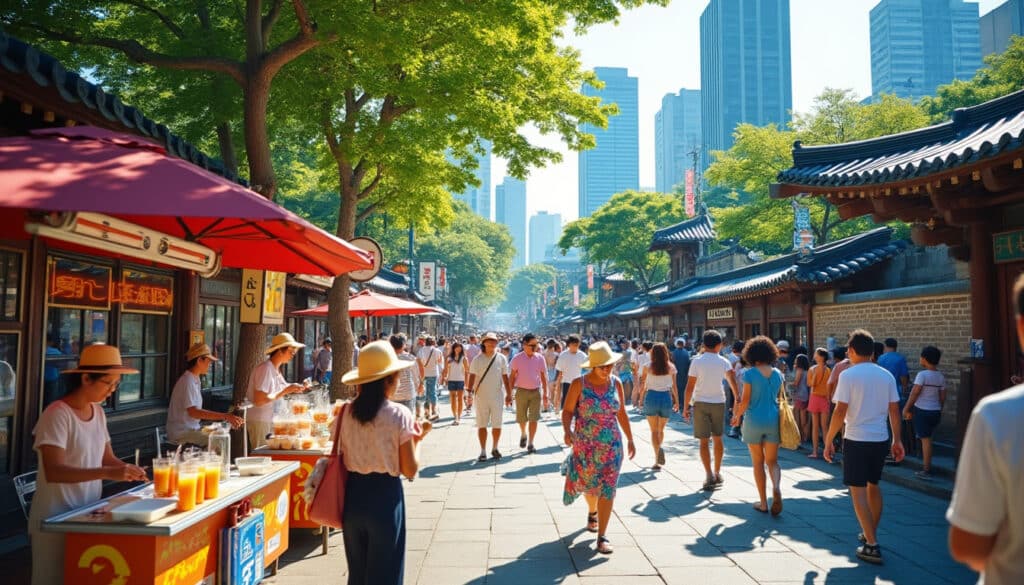
Seoul, a vibrant city known for its mix of traditional culture and modern innovation, transforms under the blazing summer sun. With its hot and humid climate, Seoul during summer is a true testament to the concept of endurance and adaptation.…

